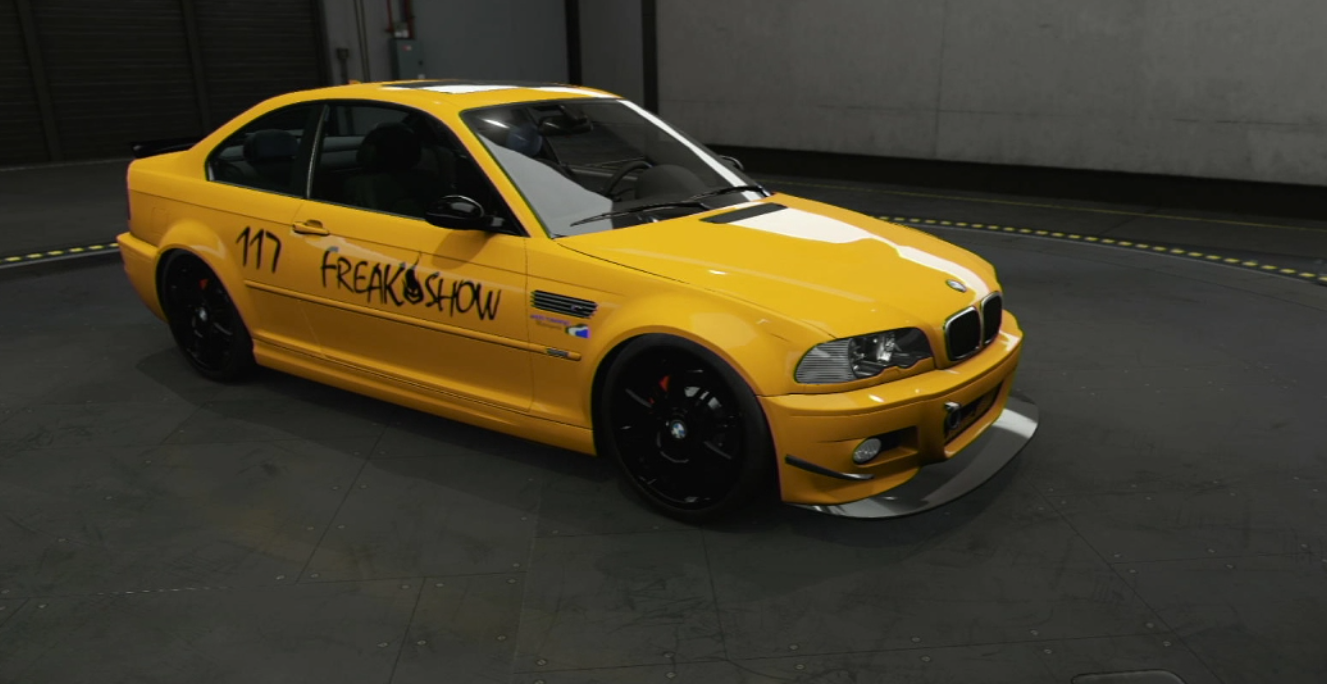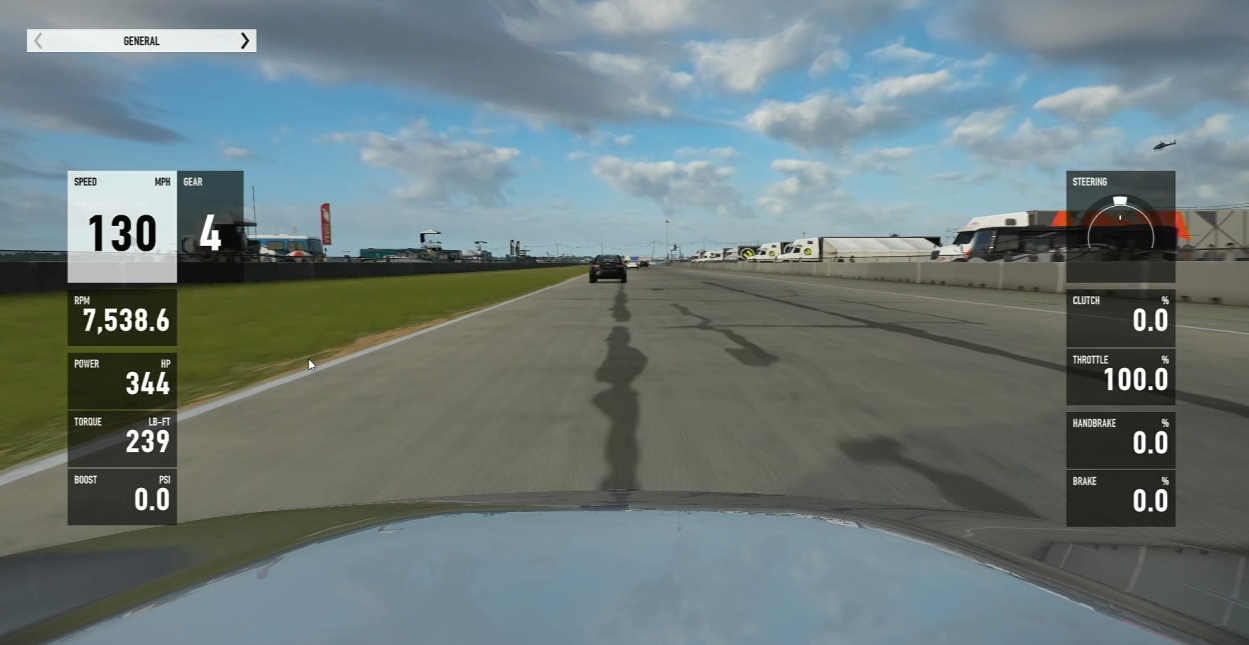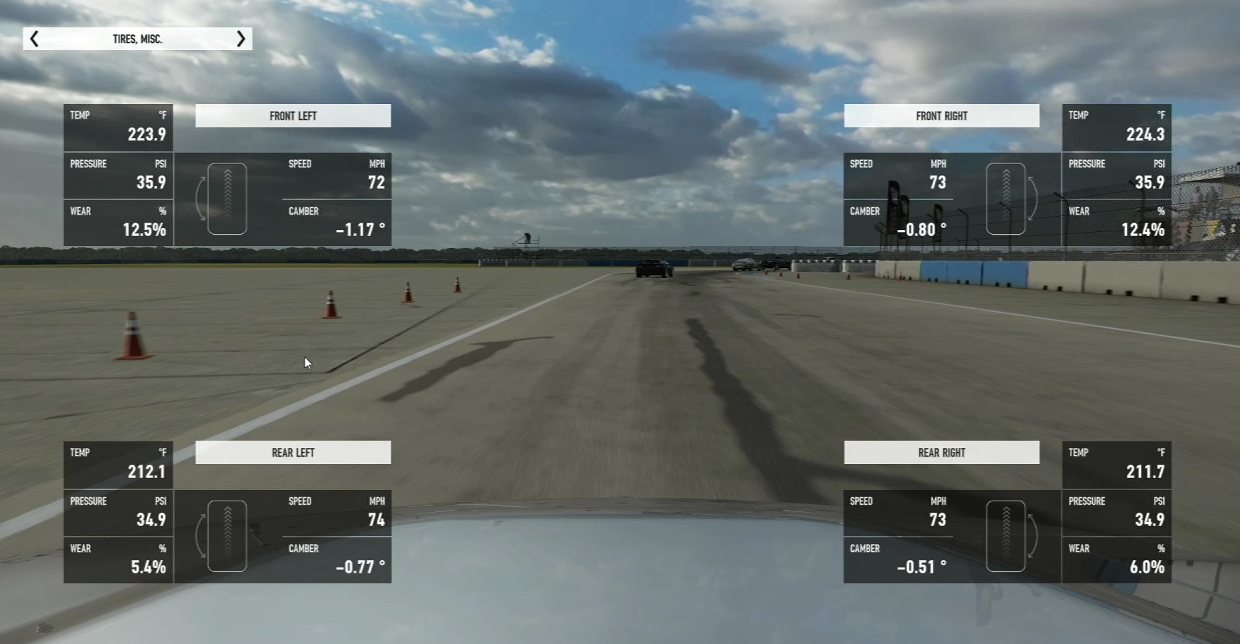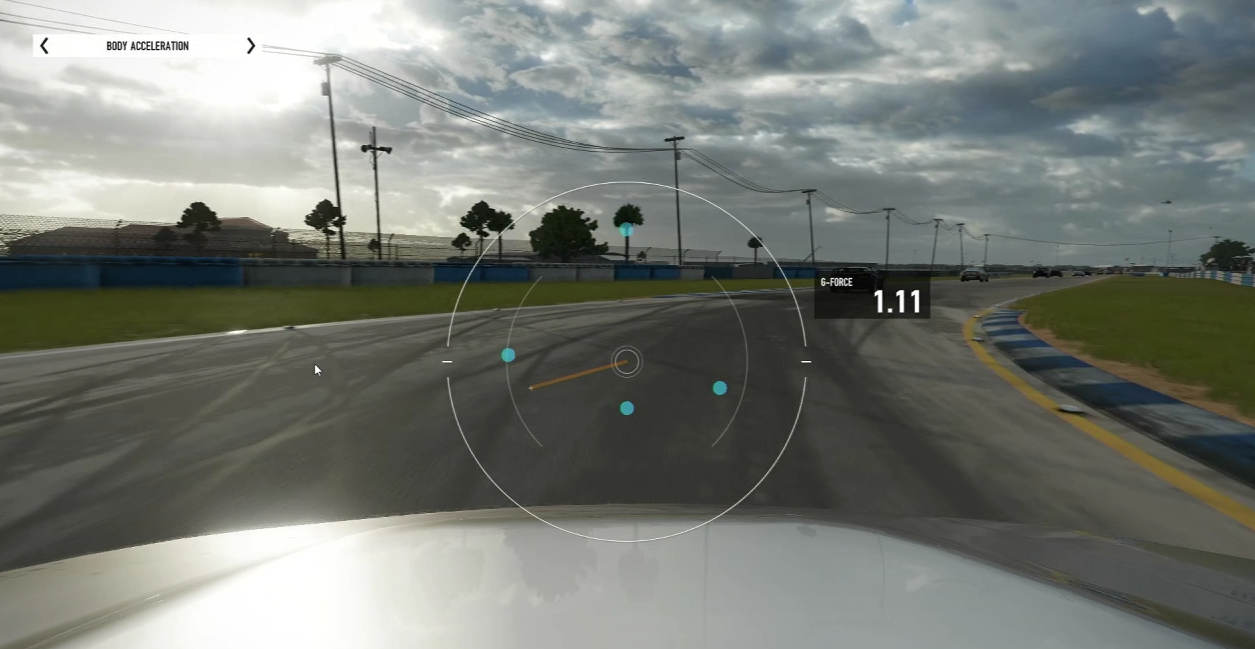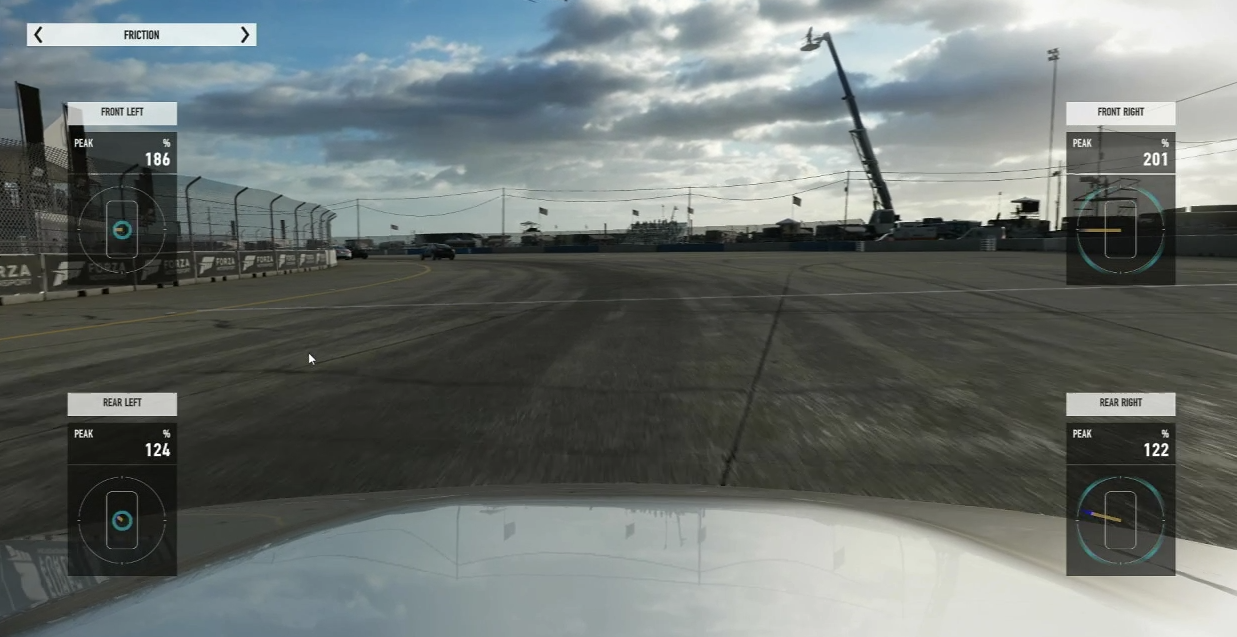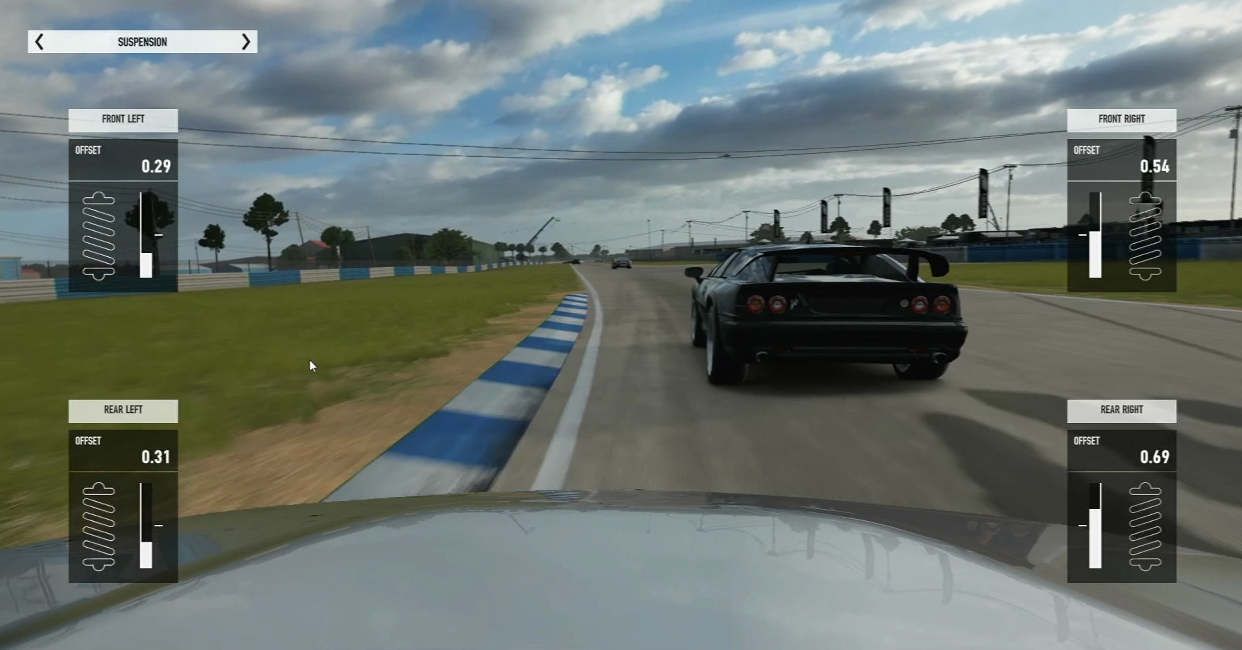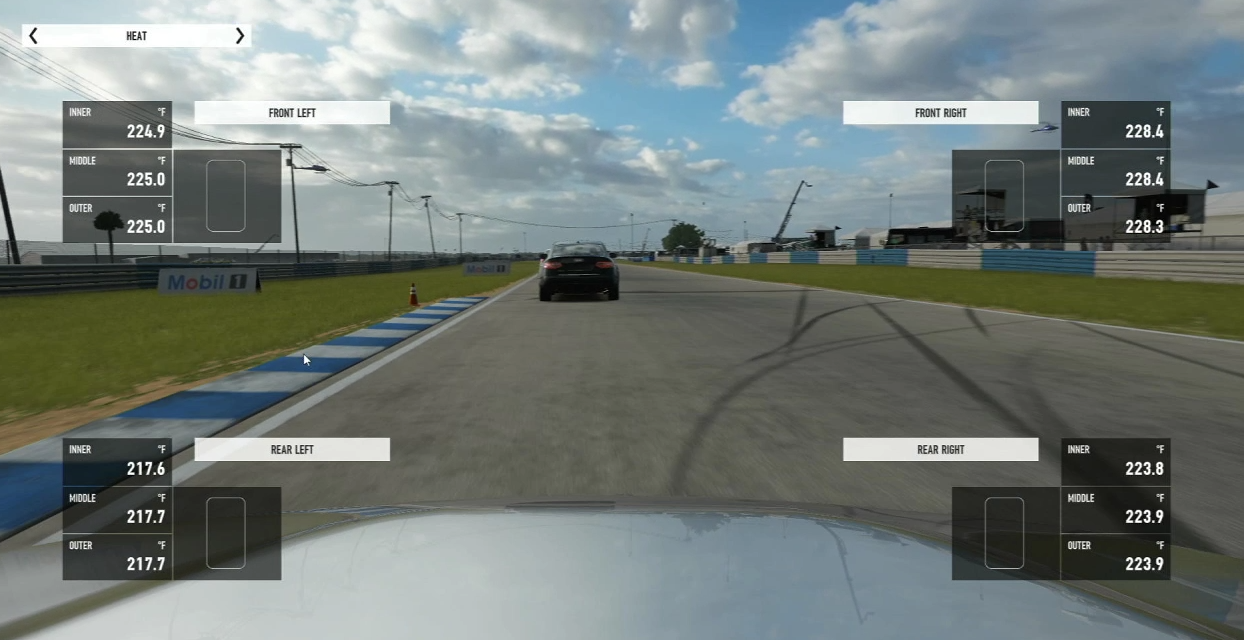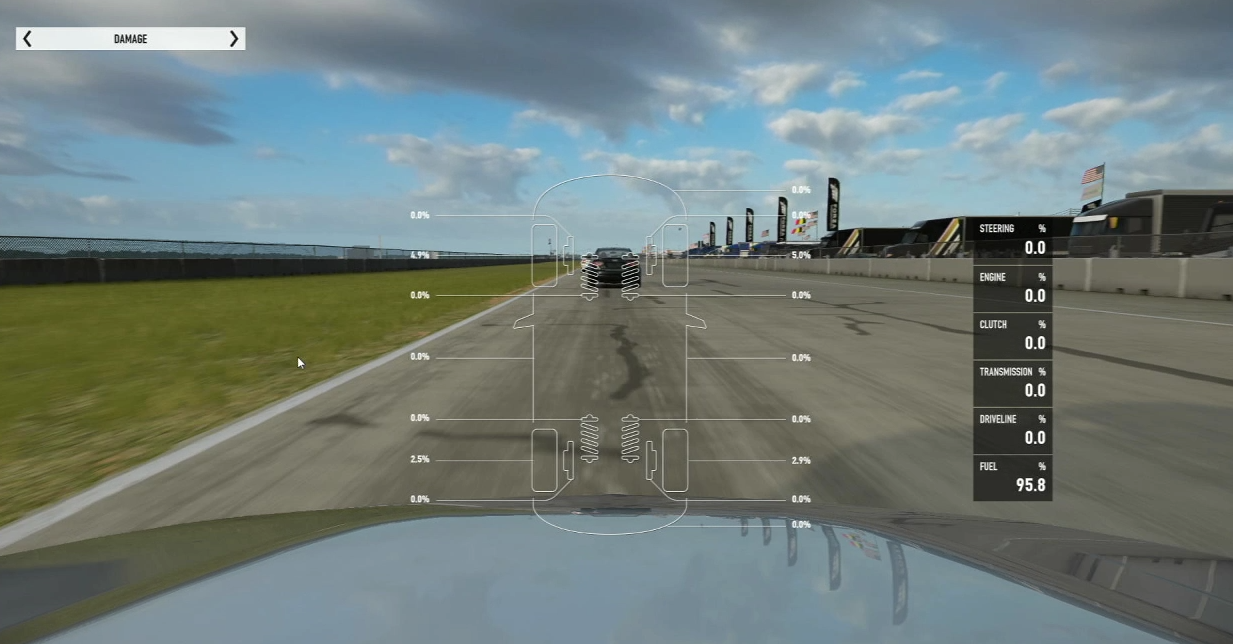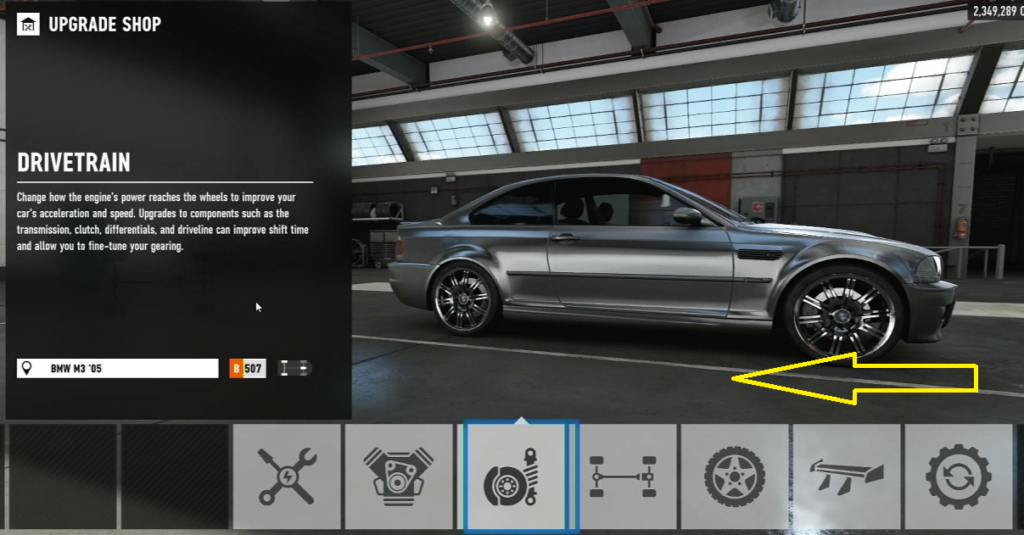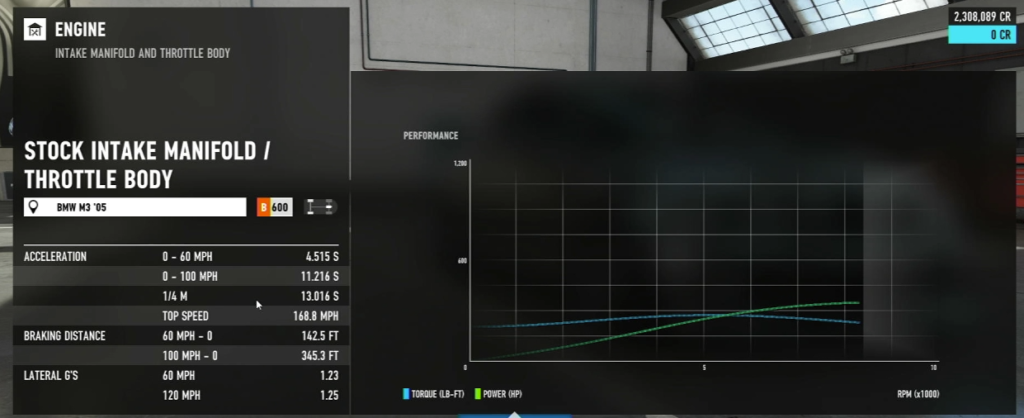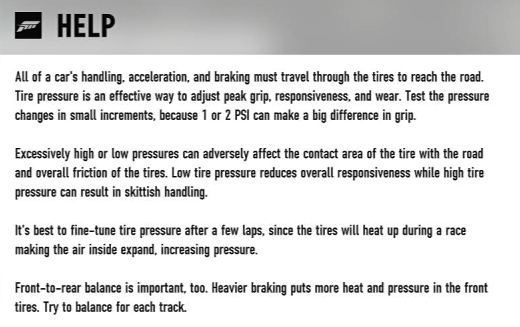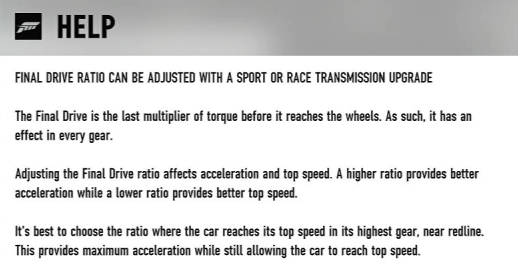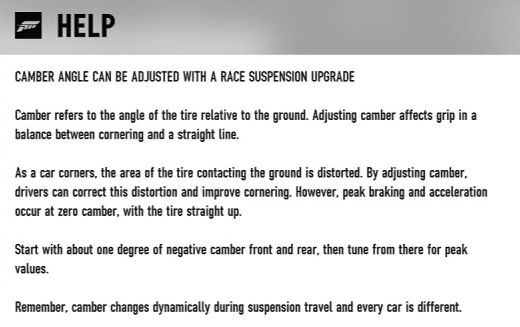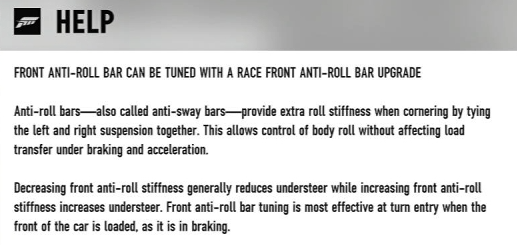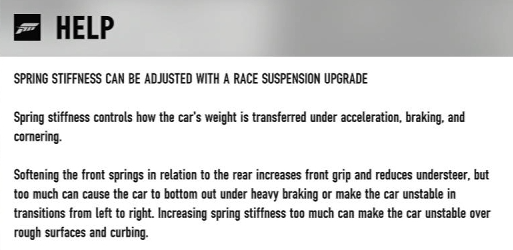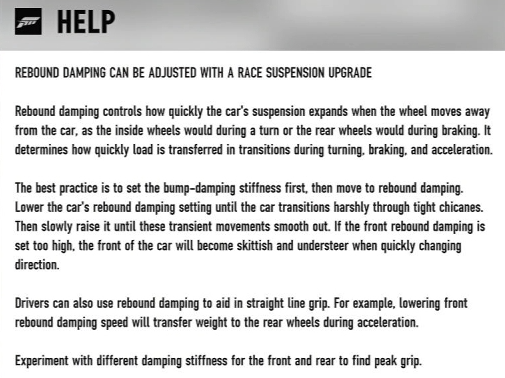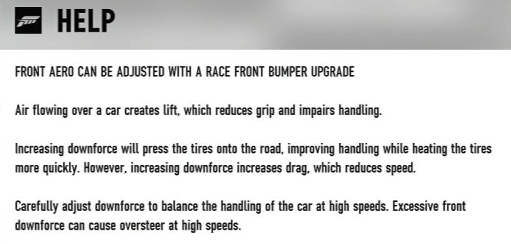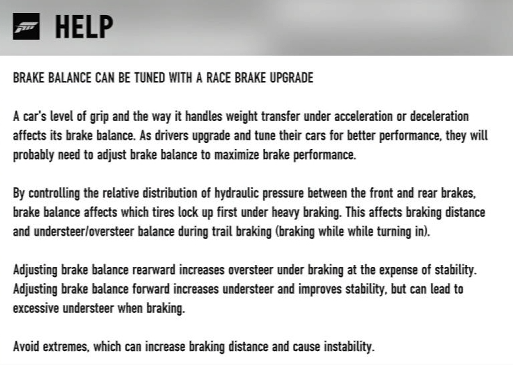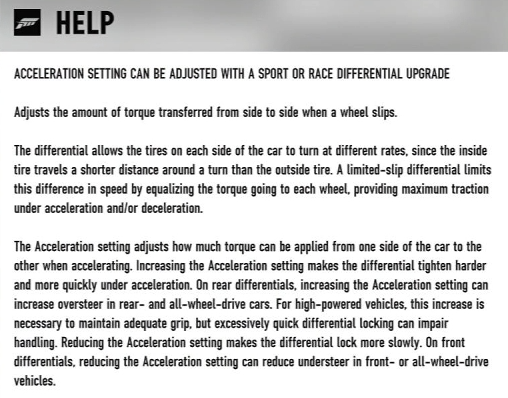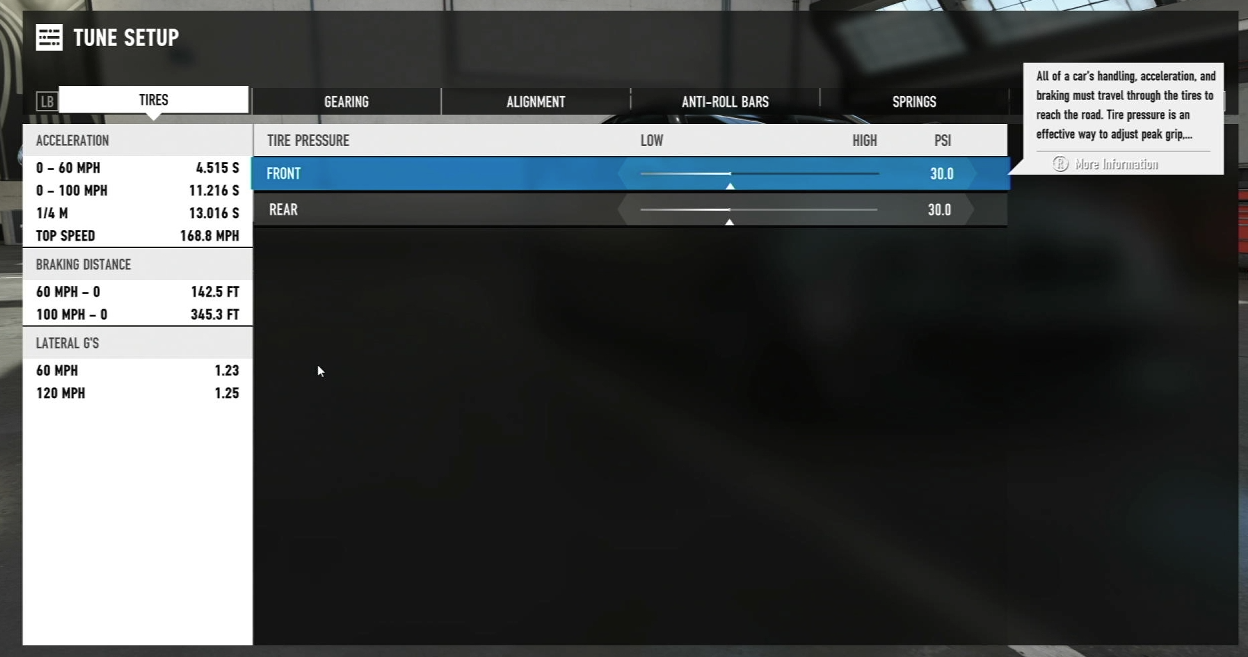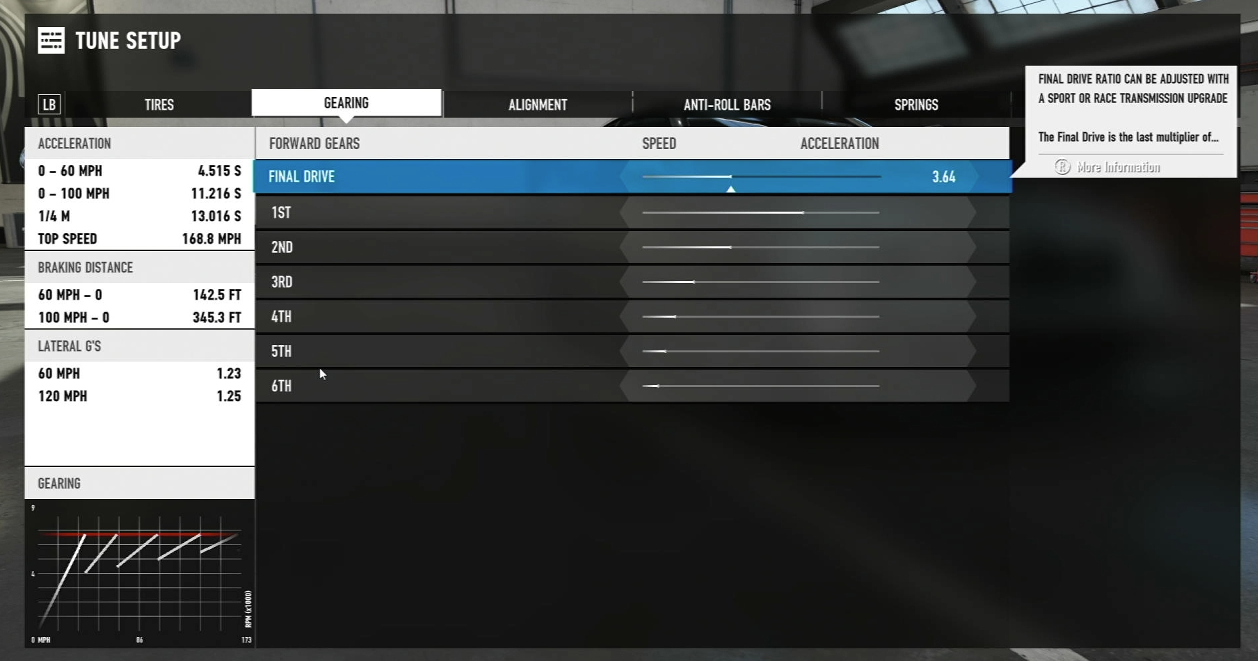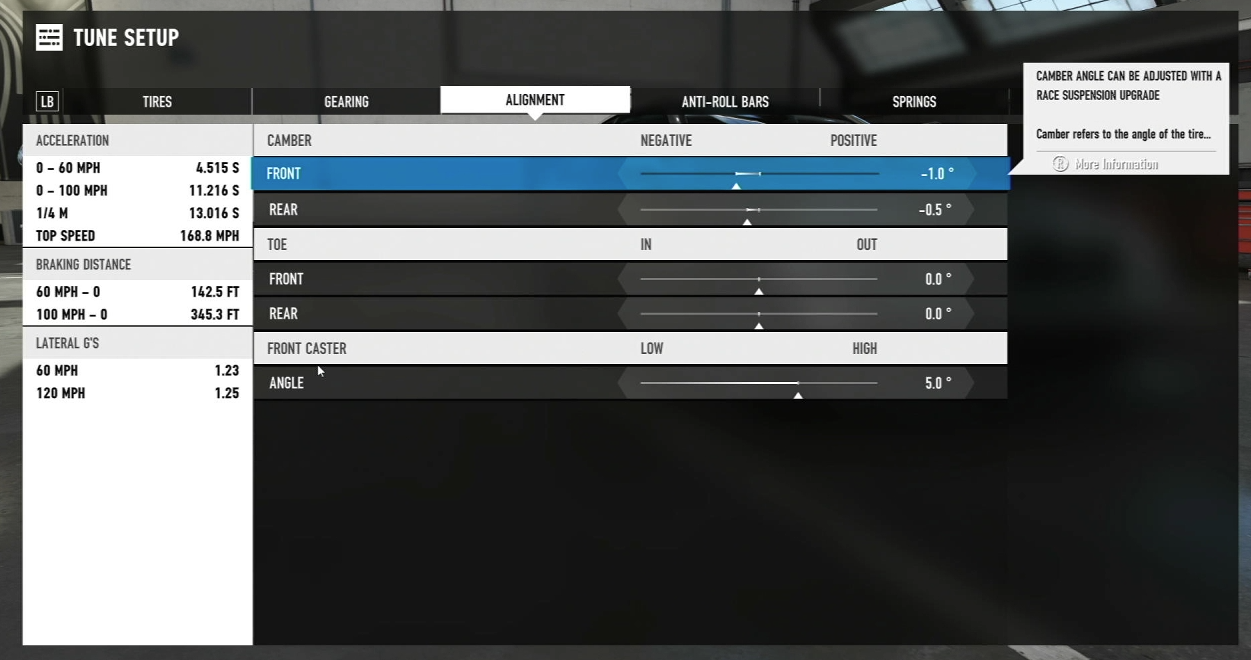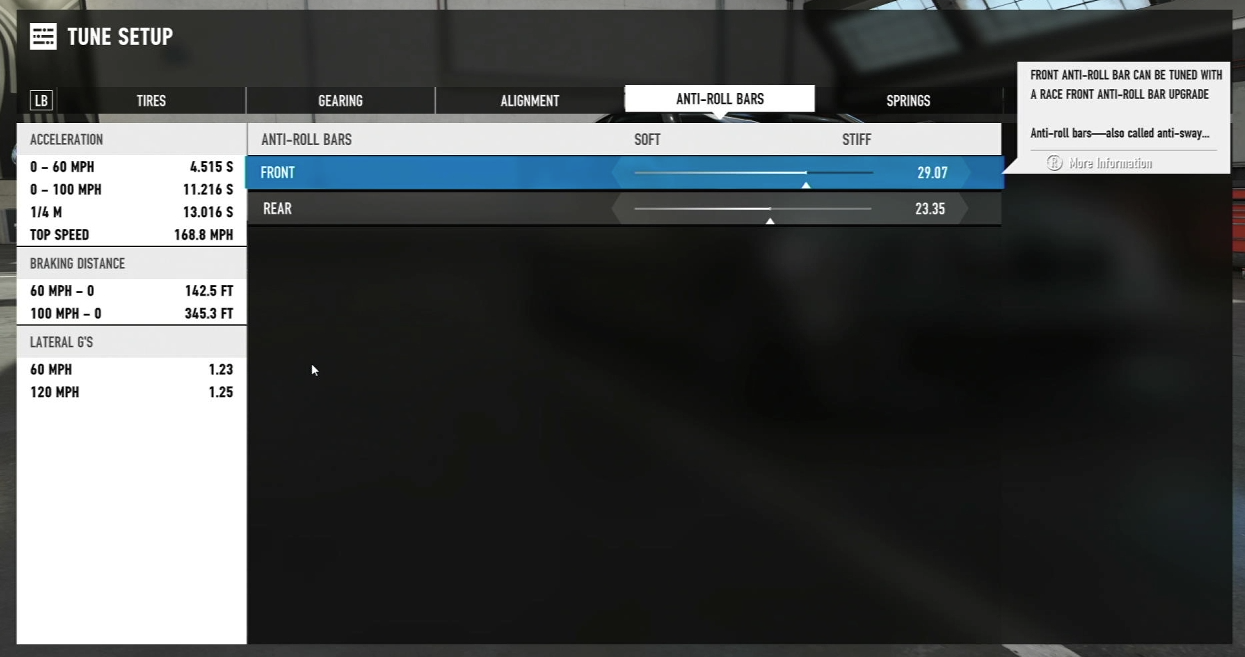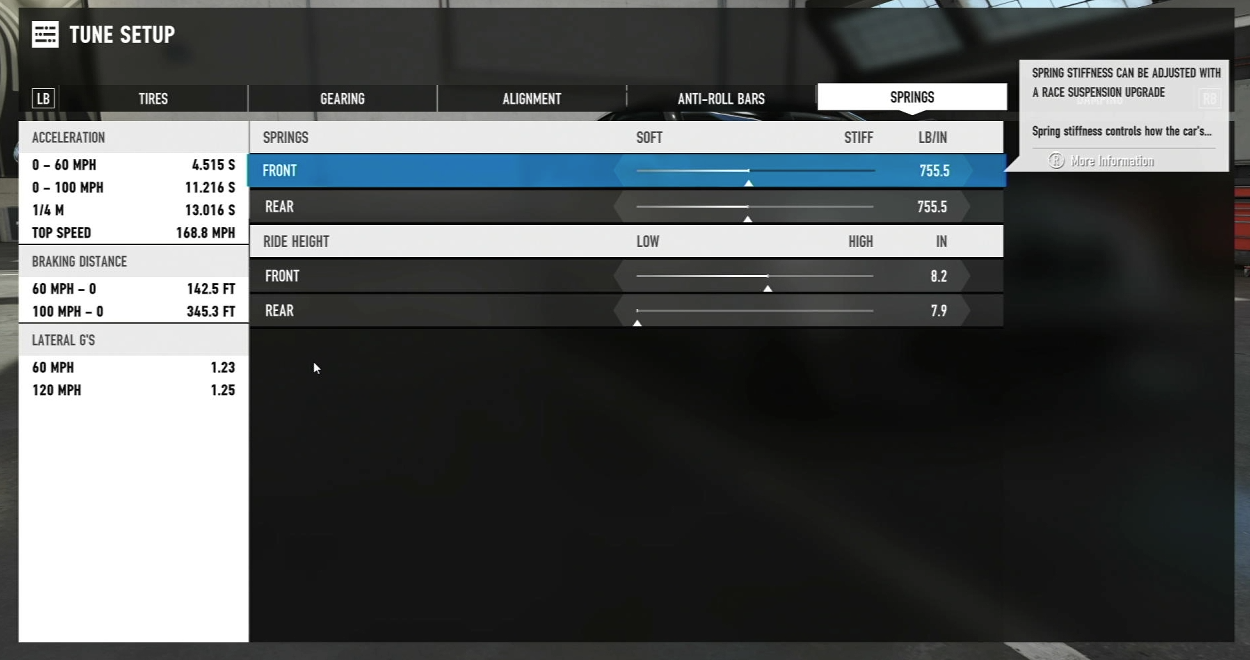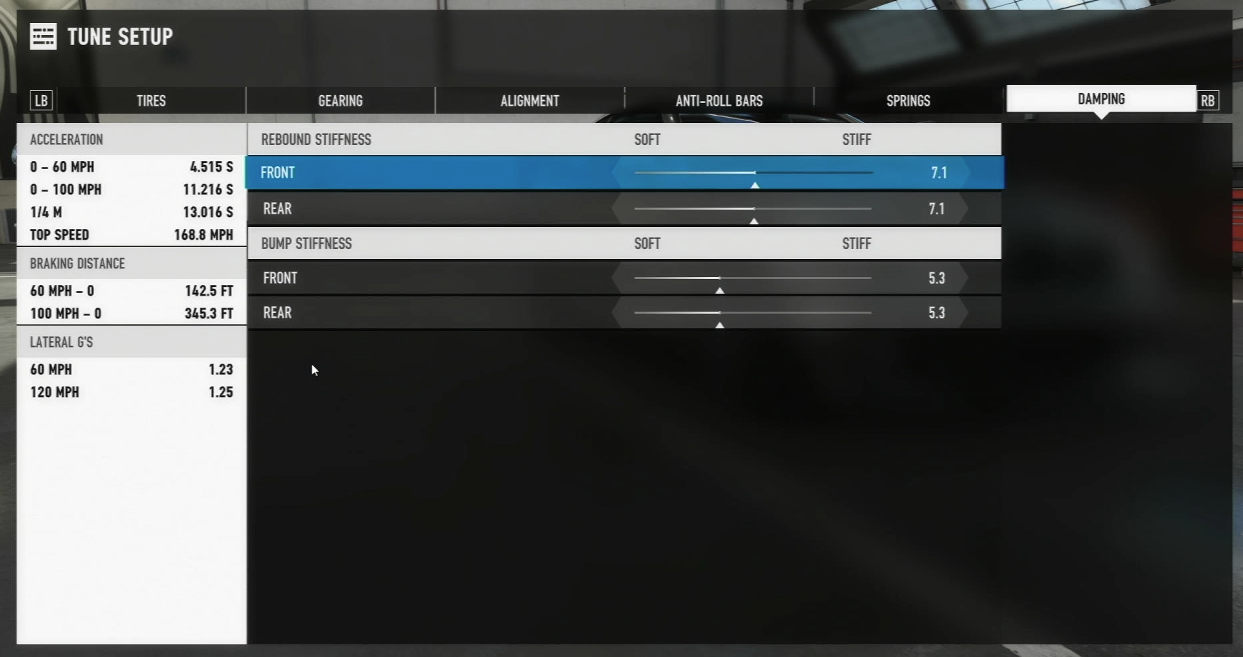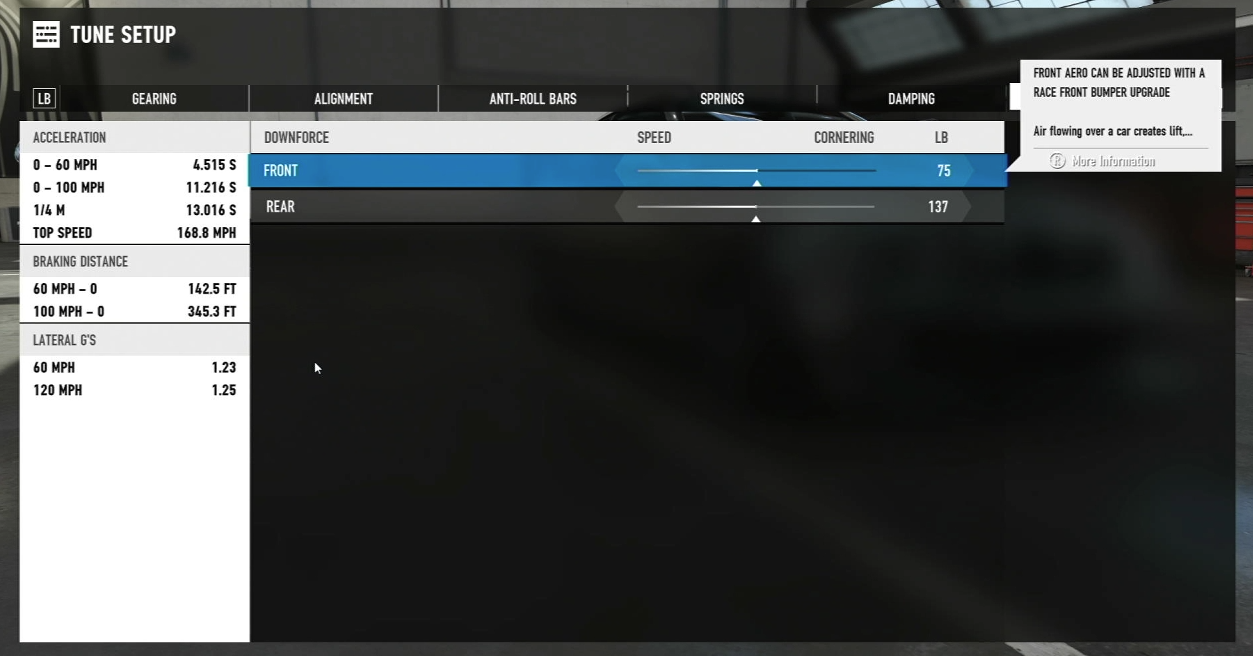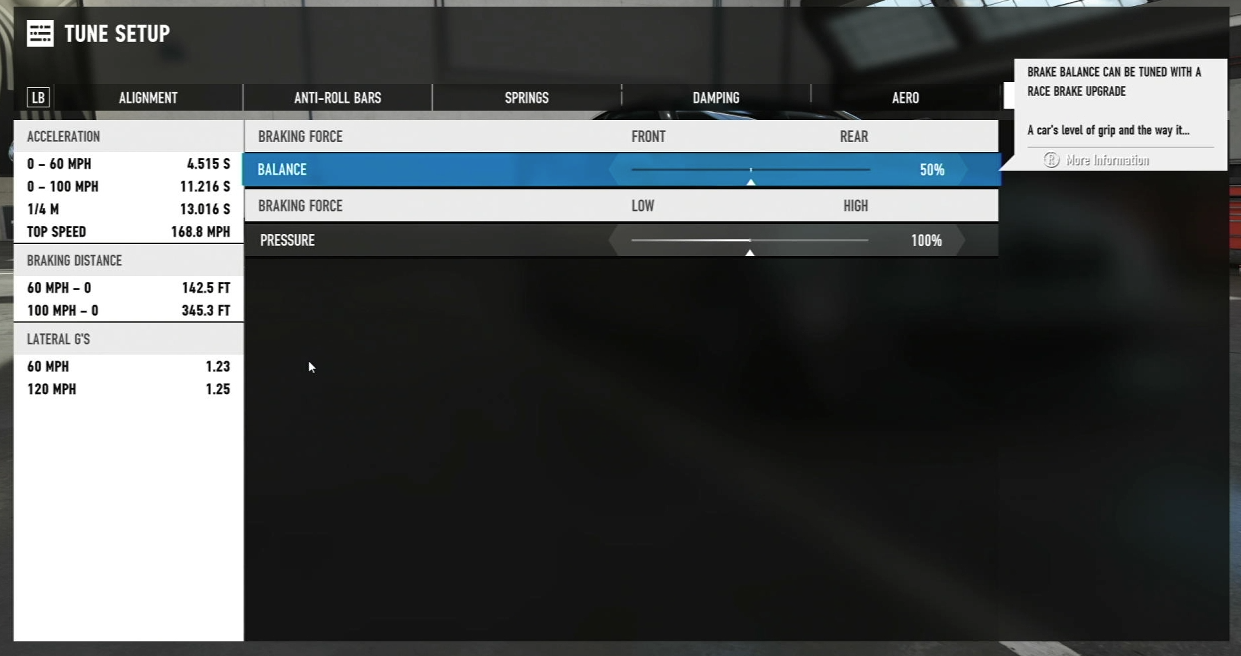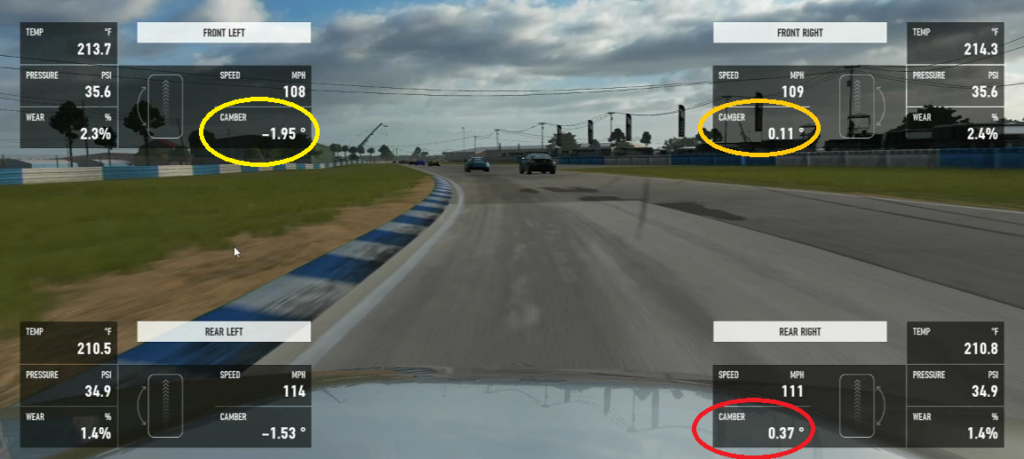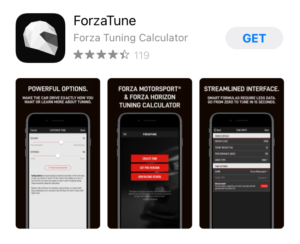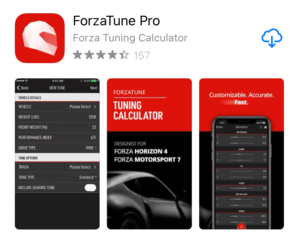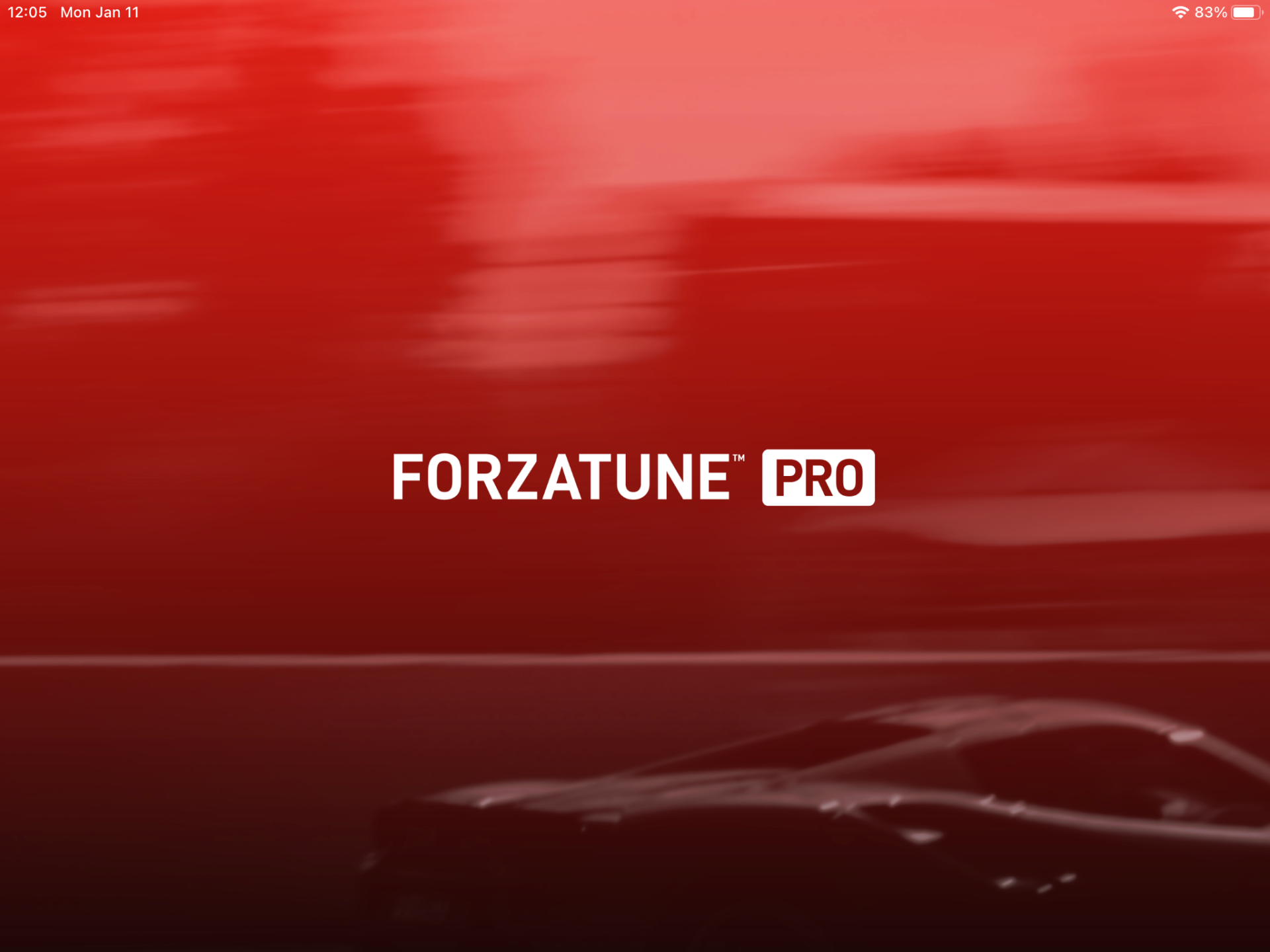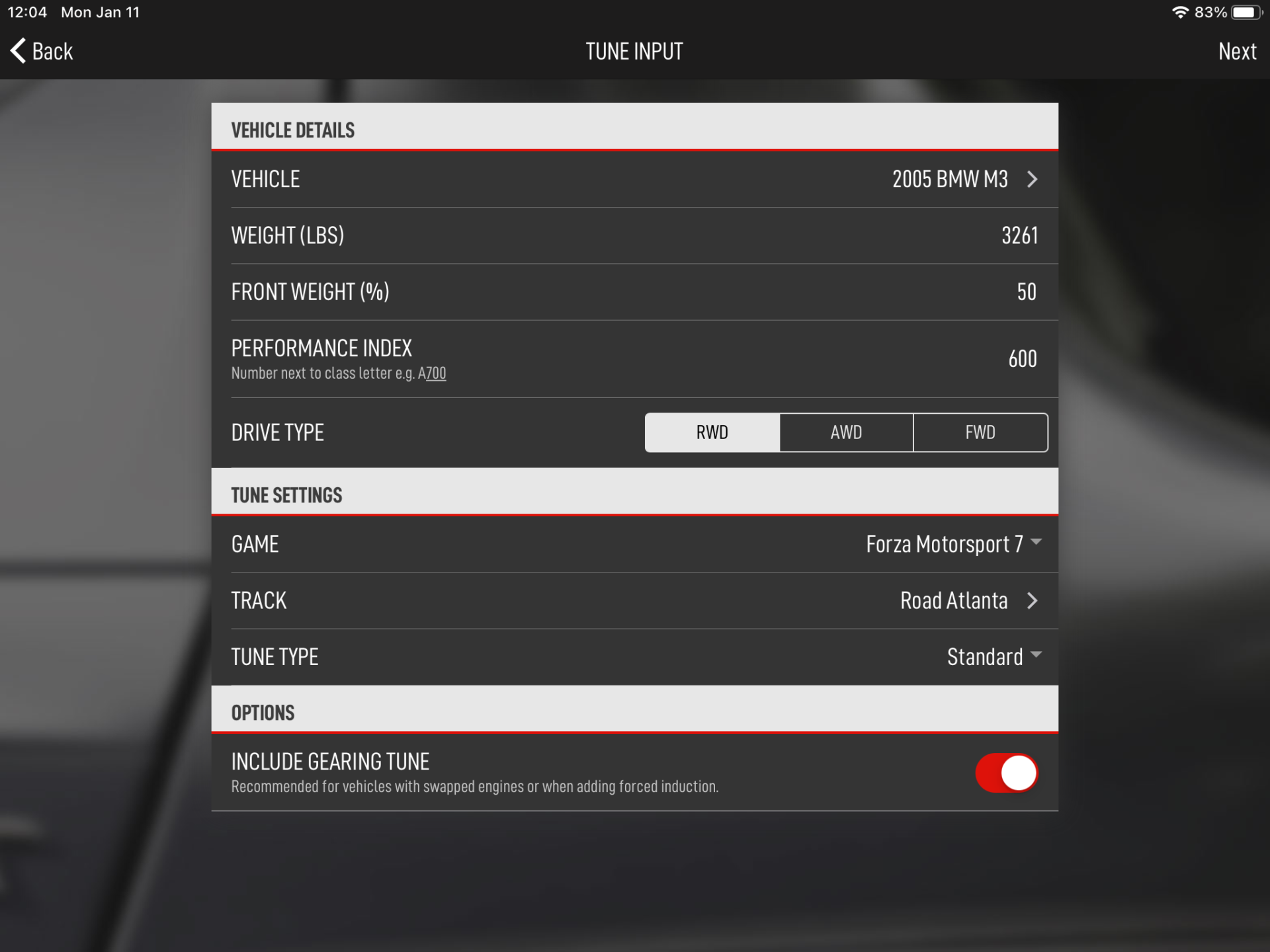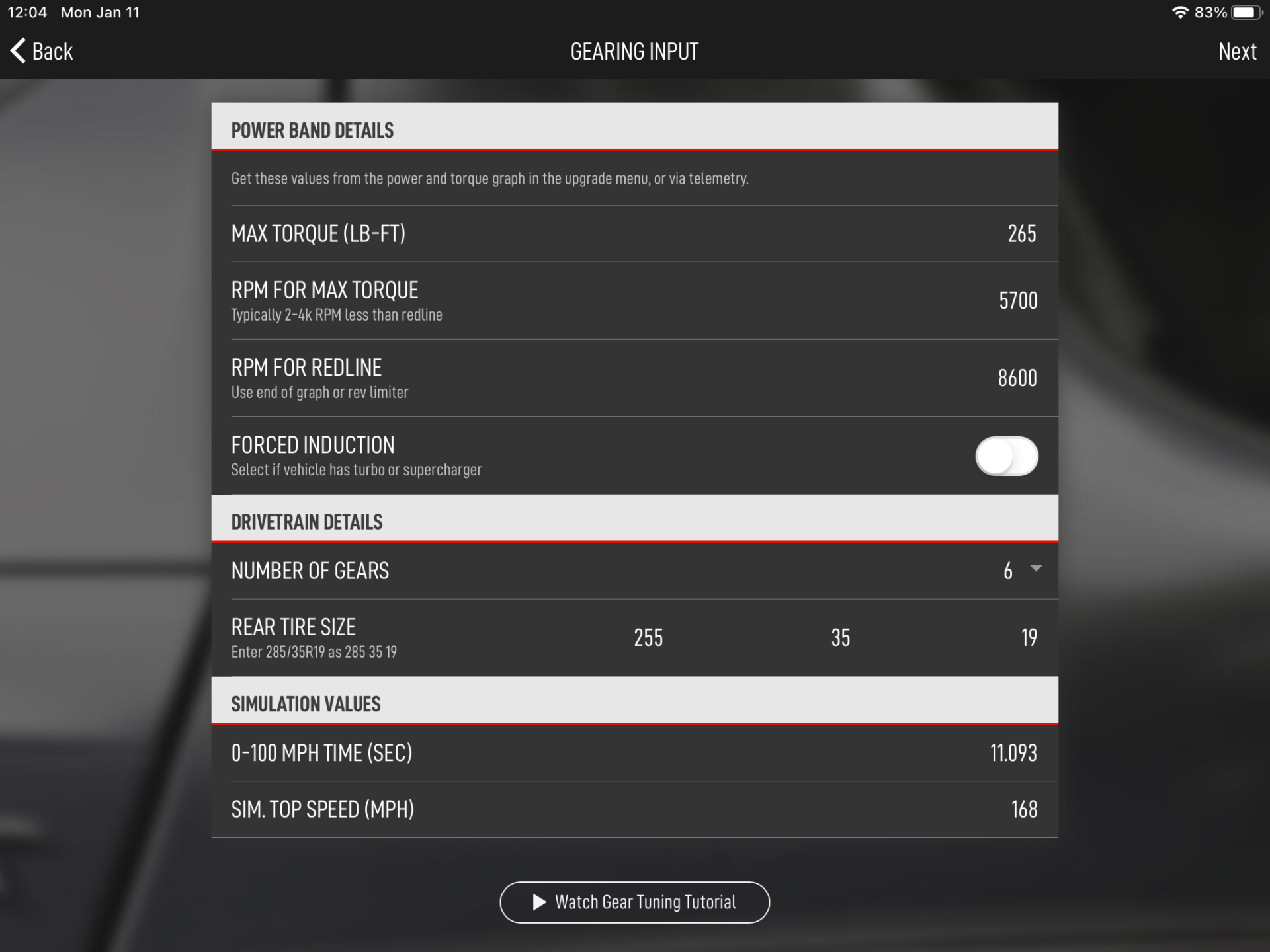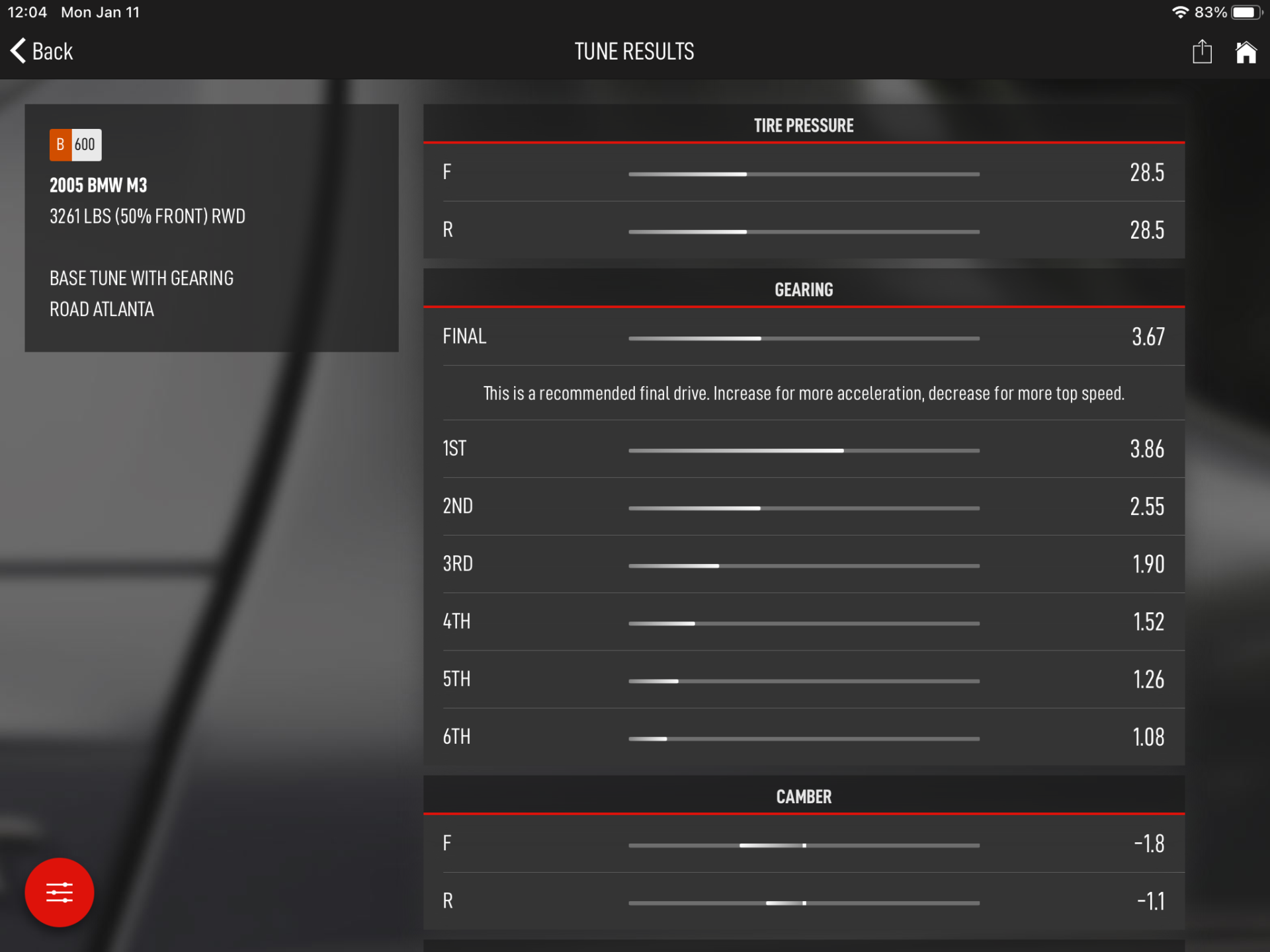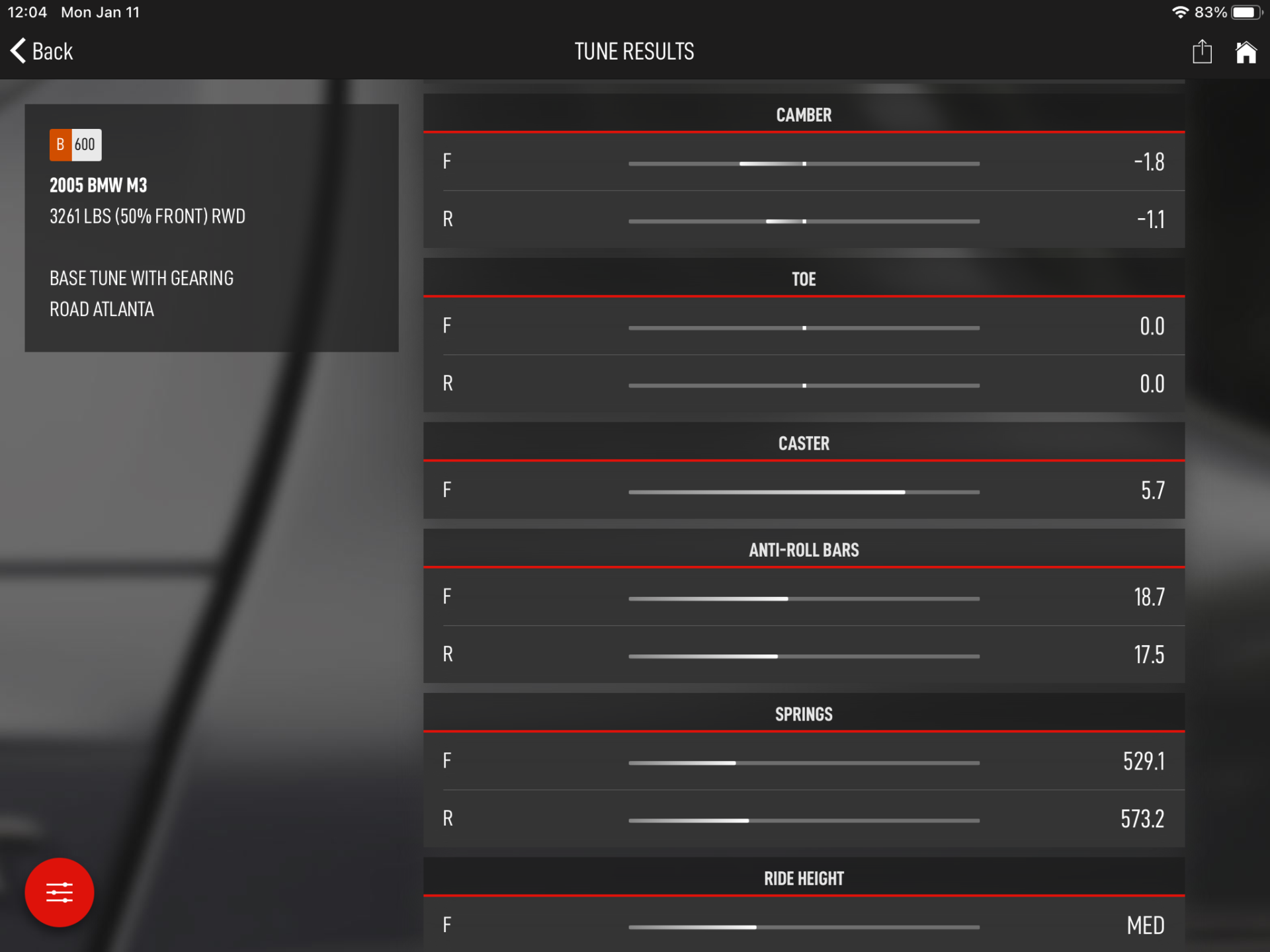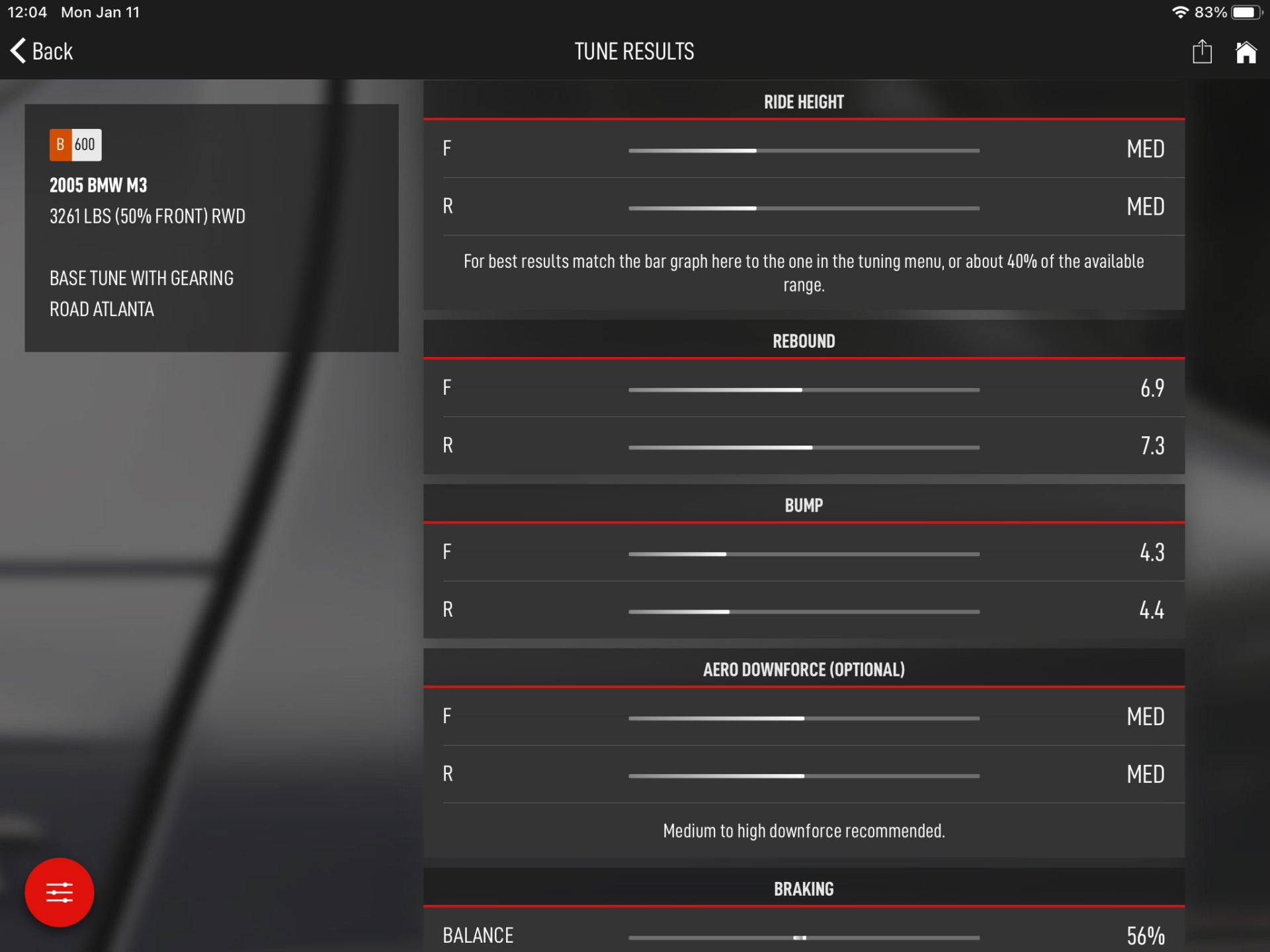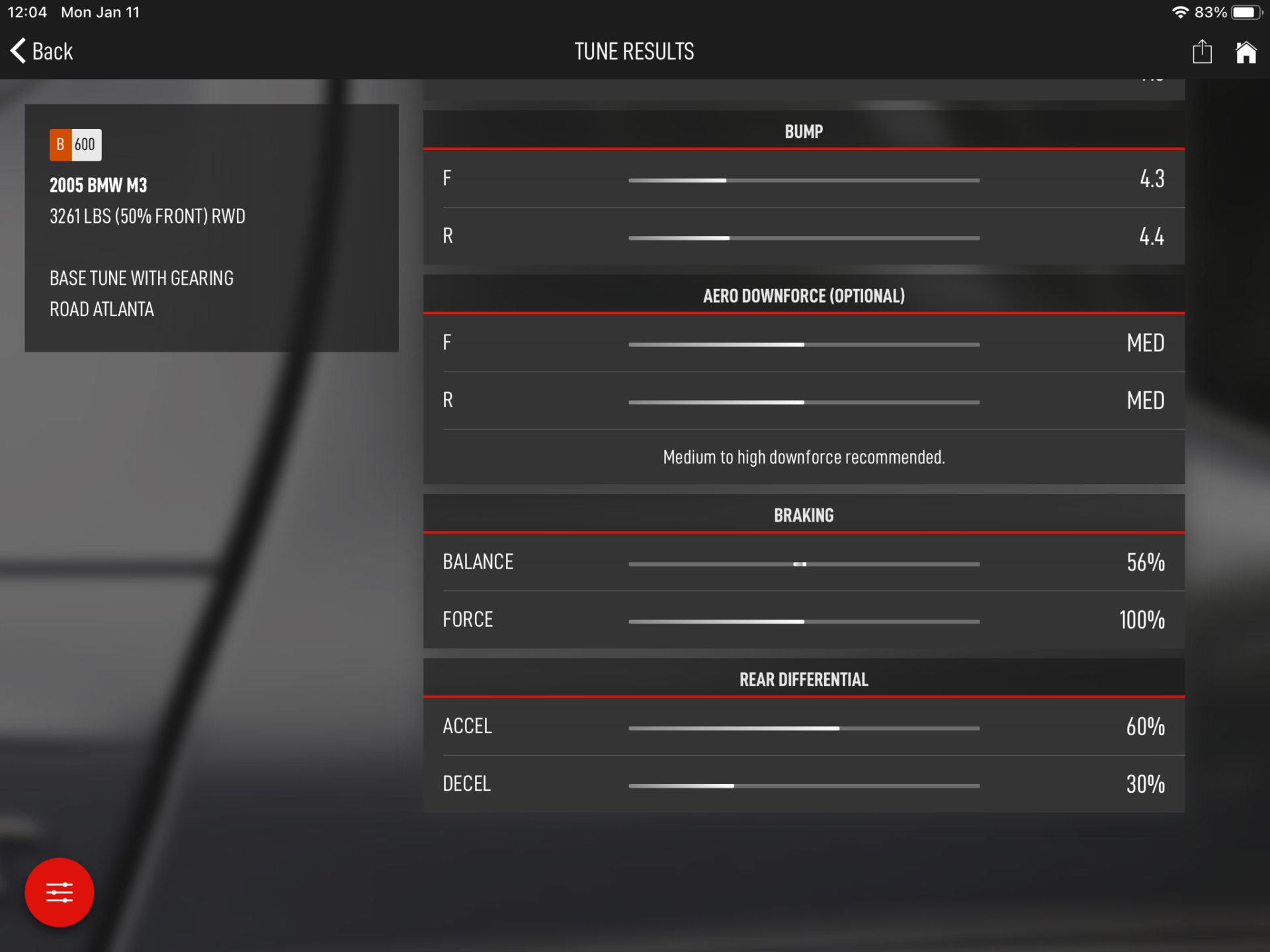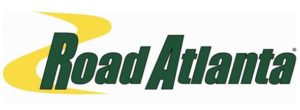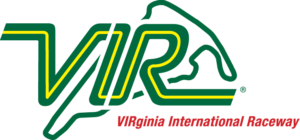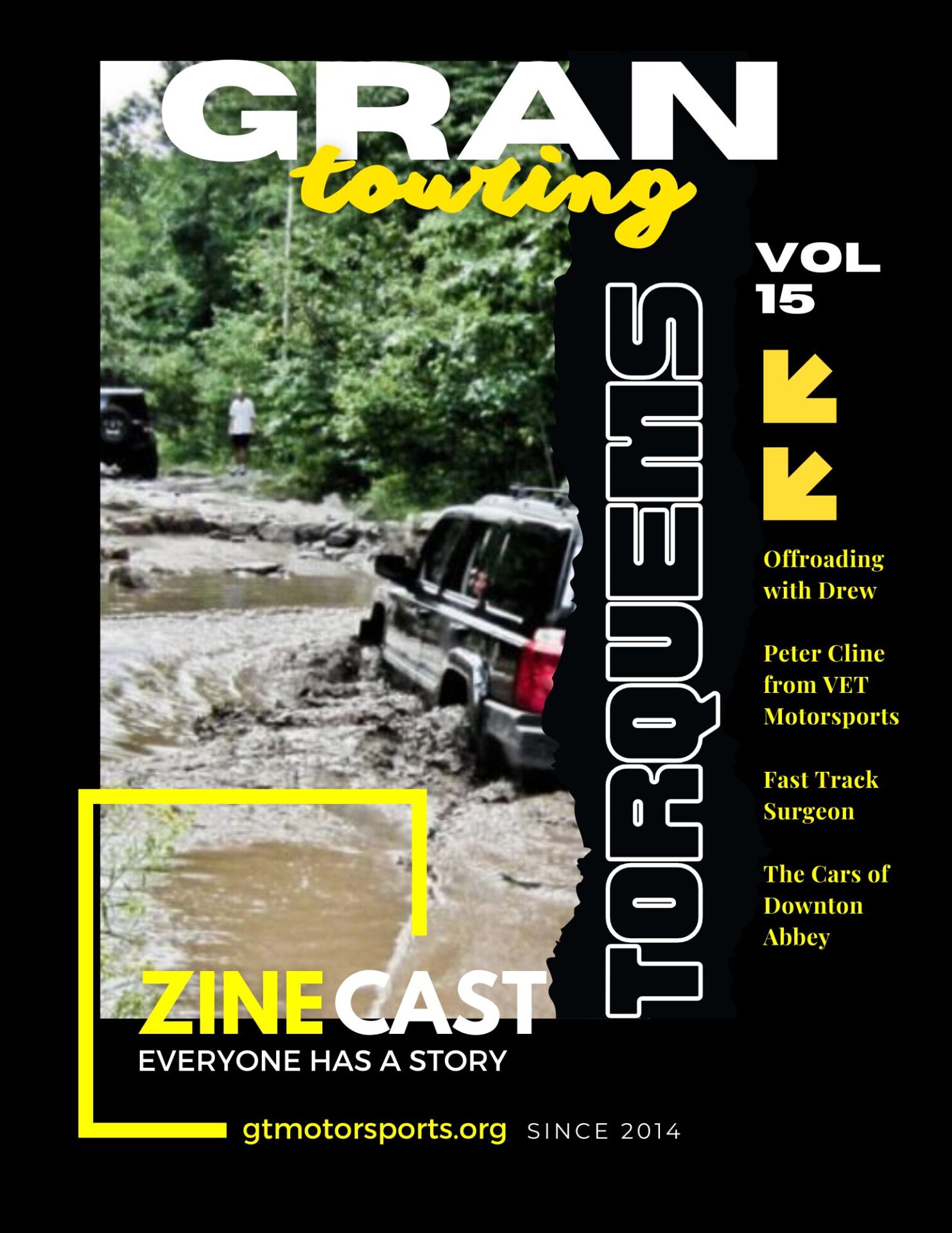Not trying to date myself or boast, but I’ve been playing racing games near religiously since Pole Position on the Atari. Todays games aren’t the same bump & run with your friends that they once were. They have very sophisticated physics and AI engines making them “more realistic” with every new title being released. And for those wanting even more realism, there’s always been more sophisticated titles that required you to tinker with the games internals in order to get the most out of the experience.
For me, trying to squeeze the most out of the system started with Papyrus’ Indy Car and the original F1 Grand Prix games (pre-Codemasters) along with games like Sim Bin’s GTR-2 and ISI’s rFactor. In Project Cars 2, using the race engineer was mandatory and in iRacing “sets” seem to be the winning formula. Plenty of titles are turn key and inviting for players of all types. But Forza Motorsports is this double edged sword often classified as a “sim-cade” where “shake & bake” is very much at the forefront but… “I wanna go fast!” requires a bit of suspension of disbelief, placebos and black magic known to many of us simply as: TUNING and it’s essential to getting the most out of your vehicle.
The Tri-force of Power
Before we jump into what to tweak and why, we need a basic understanding of 3 major components of Forza’s system: Upgrades, Tuning and Telemetry and how they work together.
- Telemetry: Yes! Believe it or not, Forza has telemetry and few people have probably used it unless they’ve hit the DOWN D-PAD on their controller by accident while racing (above). There are 7 panels providing real-time information about performance, suspension, tires, and more that you can scroll through while driving.
- Tuning: is a multi-tabbed menu system that allows you to change the parameters of each vehicle. We’ll step into the details later in this post, but for now, know that you can tune everything from the tire pressures to the individual gears, suspension, brakes and more!
- Upgrades: are the ability for the driver to use in-game currency to purchase upgraded parts for their vehicle. Parts range from aesthetics (wheel and wings packages) to adjustable suspension and drivetrain components, and even engine swaps.
But… tuning is so easy! – said no one, ever.
“I just buy the stickiest, widest tires and crank the downforce to MAX – the car is perfect!” The most important thing to understand about how the aforementioned 3 systems function, is that they actually work together. And often times the most important of the three is actually the upgrades you choose; they have a huge impact on the handling (not just the speed) of the car. Let’s say you decide to pursue weight reduction for your vehicle and leave your suspension untouched, we all know Power:Weight makes you faster, right?
The answer is Maybe! – in Forza-physics terms the changes we just suggested will cause you to go slower – at first – because your suspension is still calibrated for your previous weight. In short, your entire alignment and spring/shock setup don’t match the car anymore; and will cause it to handle worse ergo producing slower lap times. So what does it all really mean? and How do you we fix?
When building a car to a spec like B-600 (or R-835) its important to work backwards in the upgrades menu. Take the Lotus approach “add lightness, then power” – meaning, work from the right side of the tuning menu to the left. Add stickier/wider tires, then aero, then weight reduction, suspension, etc. When choosing suspension, drivetrain and brake components, purchase anything/everything that’s labeled “adjustable.” Whatever wiggle room is left, use that for power mods that get you closest to your desired PI (Performance Index).
Top Tips for Upgrades
- Sport vs Race: Many times you can save valuable PI by selecting “Sport” instead of “Race” like transmissions, clutches, etc; then tune. In the case of transmissions, tune the final-drive instead of all the gears. Race transmissions will actually act like a swap and will automatically convert some cars from 5spd to 6spd, so keep that in mind during your build.
- Long Blocks: Don’t waste your PI or money on “Race Engine Blocks” or “Race Pistons” and even “Cooling Mods” because in most cases you’re probably not running “Full Sim Damage” and won’t run the risk of blowing up your engine on a 10 lap race. These mods add power, but they also add unneeded weight and come at a significant PI cost.
- Exhaust and Intake mods are bunk… and neither change the sound of the engine. They offer big PI increases for low HP gains. Focus your attention on the parts that matter: Valve Train, Cams, Ignition. Cylinder-head mods play really well into the Tuning system and see drastic changes to the HP and Torque graphs.
- Supercharging is your friend! Adding a low-end supercharger from the Aspiration Conversion menu is great for cars with slow revving engines or that have low torque numbers. You get big gains (sometimes +50hp) and not as much of a PI burden as you would with a Turbo or other engine upgrades. Superchargers are also easier to tune and offer more linear power graphs.
- Drivetrain Conversions: If you read enough blogs about Forza Tuning, a common thread will be the importance of the “AWD conversion” mostly because RWD and the TCS systems really don’t function the way they should; and the AWD algorithms are much better allowing you to turn off those nannies; have better off the line and corner exit speeds even if it means sacrificing some weight savings.
Tuning Guide
Before you run off and start working on your own builds, I’ve put together a video demonstrating our stock E46 M3 and its capabilities, tuning the car by hand, then using a tool like ForzaTune. Enter our test subject… a base BMW E46 M3, boasting a modest PI of B507 which we will tune for B600. Let’s see how it turned out (below).
Top Tip for Tuning: Before you make any adjustments to the car, save your existing numbers as a baseline tune, then if things go royally pear-shaped, you can quickly revert back to a last-known-good-state! And don’t buy 25 Honda S2000s, just have 25 well labeled tunes, mkay?
Reading is Fundamental
In addition to, or in case you didn’t watch the video (above), I want to spend a little bit more of your time talking about the more important parts that were covered. The table and graph (below) are more than just eye candy, they provide essential data as we get further along in our tuning process.
Not all of us are automotive engineers, nor are we software developers and we don’t have to understand Forza at that level. Forza does provide a lot of useable data if you take the time to read and understand the descriptions in each of the tuning menus. For those that TL:DR, remember these blobs (below) also outline the negative ramifications of tuning different components which most people tend to ignore.
Let’s step through the 9 panel tuning system and dig deeper into what’s going on. There are lots of tips if you swipe through the carrousel below.
I can’t stress enough how important your camber setting is to the overall handling of the vehicle. As mentioned in the slideshow above, Camber is one of the largest sources of confusion in tuning. The important take away here: confirm your settings using telemetry before making additional changes. Using your telemetry overlay you’ll realize the numbers you set are relative only when the vehicle is static. But someone told me to just run -2.5 camber… ask yourself WHY?!? – the reason becomes clear when you watch the vehicle mid turn – note the picture below – we’re not even at apex and the front right (and rear) tire is starting to go positive, which means grip is diminishing and understeer is next. Use your telemetry data at apex and adjust your camber so that its as close to 0 without going over as possible. Remember: too much camber shreds tires!
As I mentioned earlier, upgrades make a huge impact on the handling of the car. With respect to suspension, weight changes make the most difference. In real life there’s all sorts of complex calculations to determine the effective torsional spring rate of a sway bar, but in Forza the calculation is based solely on the diameter of the bar itself. So with some fuzzy math, each 1mm increase/decrease in size amounts to about 15% change in added spring rate. Determining what that base torsional rate is – fuhgetaboutit! – that isn’t available which makes it hard to determine if that sway bar is worth 20 or 200 lbs. Just remember that the weight of the car also effects the sway bars effectiveness: Lighten your car, lower your sway bar rates; the same is also true of your spring rates. Be sure to pay attention to the weight distribution numbers as the vehicle changes; moving +/- of 50% will require changing your spring rates to keep the car balanced. Using the Dampers telemetry overlay lets you see how the suspension is reacting to your changes.
Tools of the trade
For those of us that don’t want to waste time looking at telemetry, doing long division by hand and completing differential equations homework, there are a handful of apps available that can help you through the process of tuning. ForzaTune and QuickTune are the front runners in this category. I personally own a copy of ForzaTune Pro ($3.99), instead of the freemium version because of some of the extended features, including the Gearing Calculator, which is quite helpful. If you want to know more about ForzaTune Pro and how it works check out the Tuning Guide video I posted earlier. For now, swipe through the settings for our E46 test car (below).
The proof… is in the lap times.
One of the most important things about testing your changes is already having established yourself to be a consistent driver. You don’t have to be a gaming savant or a Formula 1 prodigy. You just have to be consistent. And remember… tuning isn’t going to make YOU better, it’s about making the car reach it’s potential.
Selecting the right track for tuning is also crucial. Test/Tune a car on your favorite track… sure!, but that might not be the right choice to build a vehicle that can perform consistently on 80% of the tracks in the game. I recommend tracks like Brands Hatch, Road Atlanta and VIR for testing because of the mix of technical, speed, off camber turns and elevation changes. If you can tune for any (or all) of these 3 tracks; you’ll be set elsewhere.
Tuning isn’t for everyone.
Many people will see it as a waste of time with no gains. After reviewing all the data in this article you’re probably saying to yourself, why bother? With the E46 in particular, this became a demonstration of different ways to achieve the same goal. Use the homologation option and #sendit, tune the car yourself using best judgement, telemetry and intuition, or fork out for an app like ForzaTunePro. At the end of the day, you’re going to end up in nearly the same spot… a car that’s marginally better than stock!
Keep in mind that if you’re bringing up a lower-class car say from C, D, or E-class to come compete with the B-600 folks, it’s going to be critical to properly tune that vehicle to be competitive. And lets face it, everything you might learn or take away from this article, is still 100% subject to your driving style, but it’s important to really grasp the basics of how Forza is trying to simulate real life vehicle dynamics. Where you should focus your time and how. Does aero and tires matter more than transmission? It depends.
Overall, I would tell you not to stress and fuss over tuning if its not your thing. ALT+F4, close your browser, declare that you’ve completely given up and download some leaderboard tunes. All kidding aside, if you’re not into tuning… the most important of all the top-tips, the thing that’s really going to make you faster – just like in real life, is: SEAT TIME.


